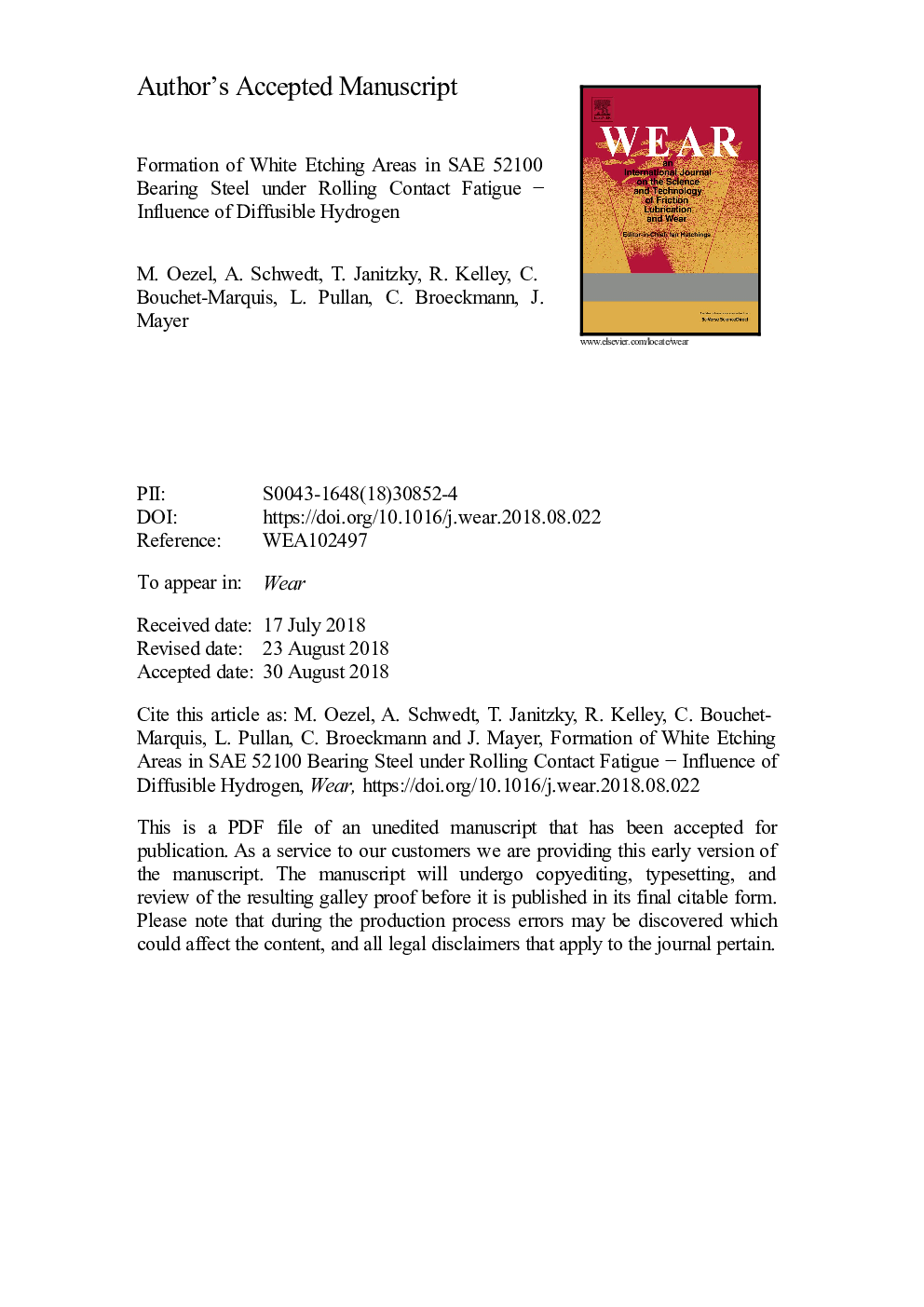| Article ID | Journal | Published Year | Pages | File Type |
|---|---|---|---|---|
| 9952591 | Wear | 2018 | 27 Pages |
Abstract
White etching cracks (WECs) have been studied over the last decades as a common cause for premature failure of roller bearings in various applications. As a consequence of the non-directional and branched crack networks associated with an altered microstructure named as white etching area (WEA) the damage pattern appears as cracking or flaking of the bearing components. In most published literature dealing with WEA/WEC, it is assumed that WEA/WEC formation should only occur under the condition of an additional load superposed to the bearing operation. The formation mechanisms of this damage are still under debate, though. In this work, the influence of diffusible hydrogen on the formation of WEA/WEC has been investigated systematically using hydrogen pre-charged rollers made from the bearing steel SAE 52100 (DIN 100Cr6) prior to testing. These rollers were tested on a four-wheel test rig using different hydrogen concentration, Hertzian pressure and number of load cycles. As a result of testing, thresholds for WEA/WEC formation were found for different hydrogen concentrations, Hertzian pressures and running time of the rollers. Further investigation with manually interrupted tests revealed the formation of the damage being beneath the raceway surface of the rollers. Detailed microstructure studies using comprehensive analysis in the scanning electron microscope including EDX and EBSD as well as plasma focused ion beam (PFIB) have been conducted to give detailed information of the altered microstructure.
Related Topics
Physical Sciences and Engineering
Chemical Engineering
Colloid and Surface Chemistry
Authors
M. Oezel, A. Schwedt, T. Janitzky, R. Kelley, C. Bouchet-Marquis, L. Pullan, C. Broeckmann, J. Mayer,
